All issues

Successor
Volume 10, Issue 6
Displaying 1-7 of 7 articles from this issue
- |<
- <
- 1
- >
- >|
-
[in Japanese]1975Volume 10Issue 6 Pages 423-425
Published: June 01, 1975
Released on J-STAGE: May 31, 2010
JOURNAL FREE ACCESSDownload PDF (504K) -
[in Japanese]1975Volume 10Issue 6 Pages 426-435
Published: June 01, 1975
Released on J-STAGE: May 31, 2010
JOURNAL FREE ACCESSDownload PDF (1317K) -
1975Volume 10Issue 6 Pages 436-443
Published: June 01, 1975
Released on J-STAGE: May 31, 2010
JOURNAL FREE ACCESSDownload PDF (1193K) -
Takeo Miyairi1975Volume 10Issue 6 Pages 444-456
Published: June 01, 1975
Released on J-STAGE: May 31, 2010
JOURNAL FREE ACCESSIn the present paper, the dynamic forces and the design data caused by the motion of the reciprocating diesel engine are computed. In order to drive them, we have used the theorem that has been expressed in my paper“A study of the link motion”, which was read at the 15th Japan Society of Marine Engineering in May, 1973. Since the repeated computing process is essential to the calculations, the functional representation of the forces is introduced in order to be favorably treated with the digital computer. Moreover, many of the characteristic properties of six-cylinder in-line engine, which will be applicable immediately from the proceding results considering the crankarrangement and firing order, are discussed in this paper. These useful data for the engine design procedure will give the valuable guidances to following items which are necessary for the fundamental engine design: machine elements, bearings, flywheels, crankshafts, engine frames, balancings, etc.View full abstractDownload PDF (1152K) -
Ichiji Nakano1975Volume 10Issue 6 Pages 457-466
Published: June 01, 1975
Released on J-STAGE: May 31, 2010
JOURNAL FREE ACCESSThere has been a remarkable increase lately in the number of VLCC (Very Large Crude Carriers) and high speed large container ships, and the high powers involved for propulsion have brought about renewed interest in the improvement of propeller design and manufacture. Two of the most important considerations in this respect will be discussed below:
(1) The corrosion fatigue strength of propellers has to be further clarified and established to allow a more rational approach in determining the optimum blade thickness, light in weight but with sufficient resistance to fracture and breakage. (2) The cavitation erosion resistance has to be improved by selecting the proper material as it appears difficult to solve this problem with the present design method. With this in mind following investigations have been carried out:
(1) The relations between corrosion fatigue strength and thickness of castings have been accurately established through tests carried out with specimens taken from variously sized castings and propellers.
(2) A new method of “Weld Surfacing” using material of superior cavitation erosion resistance has been developed. This method has been applied to actual propellers and good results have been obtained in service.View full abstractDownload PDF (10213K) -
[in Japanese], [in Japanese], [in Japanese]1975Volume 10Issue 6 Pages 467-472
Published: June 01, 1975
Released on J-STAGE: May 31, 2010
JOURNAL FREE ACCESSDownload PDF (2560K) -
[in Japanese], [in Japanese], [in Japanese]1975Volume 10Issue 6 Pages 473-478
Published: June 01, 1975
Released on J-STAGE: May 31, 2010
JOURNAL FREE ACCESSDownload PDF (665K)
- |<
- <
- 1
- >
- >|